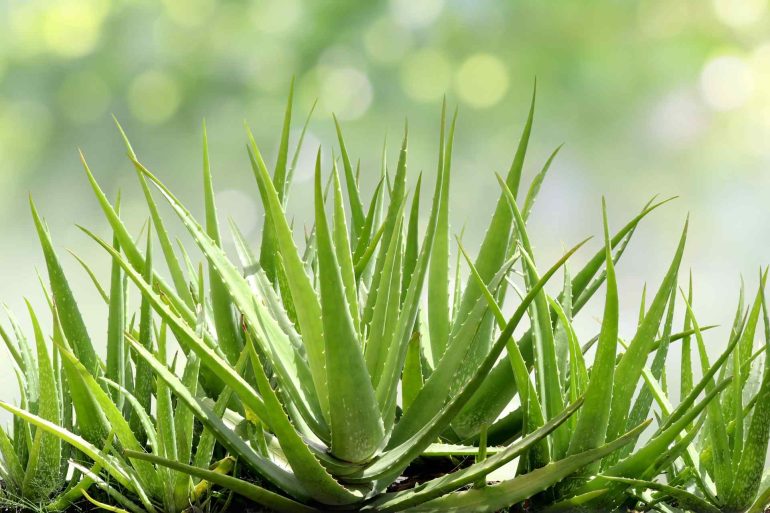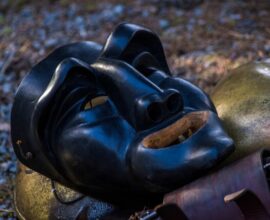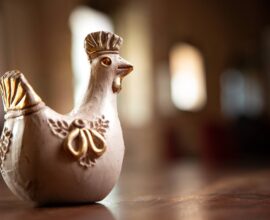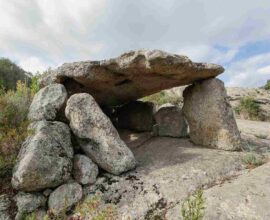Aloe: the plant of immortality growing in the Forte Village’s garden
Aloe, a miraculous plant with countless merits and virtues
Aloe vera is a succulent from which is extracted the “elixir of long life” gel, renowned for its undisputed beneficial properties.
The park of the award-winning elegant resort Forte Village in Santa Margherita di Pula (province of Cagliari) is an oasis of greenery, nature and wonder where the scent and colours of the Mediterranean scrub meet the exotic charm of tropical vegetation.
In this splendid setting, among other magnificent flora, grows Aloe, a “miraculous” plant with remarkable beneficial properties.
The Aloe bardensis miller, Aloe’s botanical name, has been known since ancient times for its natural healing, coagulant and anti-inflammatory properties.
Aloe is mentioned in the Old Testament, in the Gospels and in other ancient documents that attest to its use by the Egyptians, the Indians, the Arabs and the Chinese.
Its benefits and therapeutic uses were recounted by Hippocrates, the father of western medicine, the Greek physician Dioscorides and Pliny the Elder, the author of the famous treatise Historia Naturalis.
According to some, the name “aloe” derives from the Greek alos, “salty substance”, because of its maritime habitat. Others claim that the name has its roots in the Arabic language with the term alua, or “bitter” in reference to the taste of its juice.
Originally from the Dominican Republic, today Aloe is cultivated at all latitudes thanks to its ability to adapt to various climates, whether humid, cold or dry.
It belongs to the succulent’s family and is distinguished by its characteristic “tuft” configuration and the fleshy leaves that can reach lengths ranging from 40 to 60 centimetres and a base width of 6 or 7 centimetres.
The upper part of the concave leaves’ colour can vary from grey-green to dark green with, sometimes, a reddish tinge that in younger specimens appears in the form of “spots”.
The pale pink edge of the leaves presents thorns of about two millimetres. The flowers, which can reach 3 centimetres in length, are orange, yellow or red.
The healing properties of aloe are utilised in the phytotherapeutic, herbal and cosmetic fields: in the specific, two precious products are extracted from the leaves, juice and gel.
Aloe juice looks like concentrated yellow lymph and boasts laxative properties when drunk in small doses; the gel, on the other hand, has a viscous consistency and is rich in mucilage which makes it suitable for local applications (but it can also be drunk diluted in water).
Like most succulents, Aloe thrives naturally on calcareous and arid soils. It prefers dry and warm climates, but it can be safely cultivated in all areas, after propagation from offsets or seeds.
Aloe loves direct sunlight and it is ideally positioned in the sunniest areas of the garden or balcony; it does not require water during the winter and watering should be minimal even during the summer period and only when the soil becomes hard and cracks.
The properties and uses of aloe juice and gel
The juice, a colourless liquid is extracted from the outer rind of the aloe leaves.
This can be considered a true natural supplement as it contains minerals, vitamins, polysaccharides and amino acids that support the body when fatigued and contribute to its general well-being.
Drinking the juice can counteract skin ageing and strengthen the immune system, it has antiviral properties and, if taken regularly, can reduce inflammation, especially of the joints and muscles.
The Juice also promotes the elimination of toxins contributing to the regeneration of hair, nails and skin, can activate a sluggish intestine and curbs disorders caused by gastro-oesophageal reflux and gastritis.
The gel is obtained by halving the lengths of the leaves: the viscous and transparent substance that comes out of it assumes the consistency of a “gel”.
It is not intended for ingestion but is applied topically to the skin, directly as extracted or as an ingredient for lotions and creams, both for healing and cosmetic purposes.
The gel is rich in mucilages, lipids, proteins, saponins, vitamins, enzymes and minerals and has anti-inflammatory, immuno-stimulant, regenerating, emollient, antimicrobial and slightly anaesthetic properties.
It aids cicatrisation and its healing properties are very useful in cases of sunburn, wounds, bruises and abrasions. It is ideal for nourishing dry skin and as a natural after-sun to regenerate the skin affected by high temperatures and sunlight.
Forte Village’s Mediterranean Garden, a dream holiday overlooking the sea
Forte Village’s guests can rediscover nature and enjoy regenerative walks in the splendid atmosphere of the resort’s garden surrounded by the scent of the eucalyptus, the majestic appearance of the maritime pines that stretch towards the sky and the exotic liveliness of the succulents queen of which is the Aloe with its thousand virtues.
In one of the most magical corners of the south coast of Sardinia, with its turquoise sea, Forte Village offers holiday packages that meet everyone’s needs. In the accessible luxury of the resort, guests can enjoy Italian and international cuisine, exclusive wellness treatments, shopping and practice their favourite sports.
The little ones can enjoy their own adventures in the Wonderland area: a safe, protected and reliable environment where children can play and meet new friends followed by the Worldwide Kids certified staff.
Would you like to experience a fairy-tale holiday in an authentic paradise? Discover the Forte Village Resort in Sardinia






